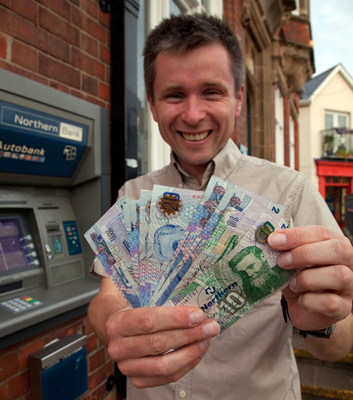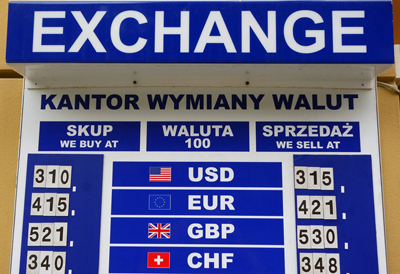Cash strategies for Europe
With the value of the euro dipping in the past few months, I've been able to experience Europe without as much of a strain on my wallet. I'm enjoying thinking of the euro as being worth a buck. I've done this in the past -- when a euro cost$1.35 -- just to con myself into splurging a bit. But now, with a rate of about $1.10 to 1 euro, that shortcut is almost honest!
The euro is used in 19 countries throughout the continent. That means more than 300 million Europeans have the same coins jangling in their pockets. For them, the euro's value -- around its lowest point in over a decade -- is unwelcome news. But for Americans, this is a great opportunity to visit Europe. There's no better time to splurge on a room with a view in Venice or slip a cheese course in before dessert during that Parisian dinner.
But even with a little more cash in your pockets, the rules of traveling smartly remain the same. When it comes to money, it's all about maximizing ease, minimizing fees, and keeping it safe.
Even though credit cards are widely accepted in Europe, day-to-day spending is generally more cash-based. I find cash is the easiest and sometimes only way to pay for bus fare, taxis, or a gelato.
When I arrive in Europe, I head for an ATM at the airport. Some tourists feel more prepared with euros or pounds in their pockets when their flight takes off, but they pay the price in bad stateside exchange rates. Wait until you arrive at your destination -- I've never been to a European airport that didn't have plenty of ATMs.
European ATMs work like your hometown cash machine and always have English instructions. All you need is your four-digit numeric PIN code.
ATM transactions come with various charges; these can include a currency conversion and Visa/MasterCard international fee, plus a transaction fee each time you use an out-of-network ATM. Minimize fees by comparing card policies before you leave home and by taking fewer and bigger withdrawals in Europe. Before your trip, ask about raising your daily withdrawal limit, and tell your bank where you're traveling so they don't refuse transactions.
I avoid money exchange booths -- except when entering a country with a different currency. For instance, if you still have a few Czech korunas or Hungarian forints when you cross the border into Poland, locate an exchange booth to convert them into zlotys. Similarly, if you have foreign cash left at the end of your trip, change it back into dollars at the airport (or spend it). It feels good to fly home with nothing but dollars in your pocket.
Look for places that don't charge a commission. They should always show both the buying and selling rates; the difference should be less than 10 percent.
Always pay for goods in the local currency. Some shops will offer to convert prices to U.S. dollars. But every time you buy something in another currency, you're essentially changing money and it's costing you extra. While this service is occasionally worth the expense, generally try to pay with local cash.
In Europe, perhaps more so than at home, it's important to keep your eyes on your money. While Europe has little violent crime, it comes with plenty of petty purse snatching, pickpocketing, and general ripping off of tourists. In stores, restaurants, at ticket booths, everywhere -- expect to be cheated if you're not paying attention. I once observed a man in the Rome subway for 10 minutes shortchanging half of the tourists who went through his turnstile. Those who noticed got their correct change; those who didn't probably went home saying, "Mamma mia, Italy is really expensive."
There probably aren't more thieves in Europe. We just notice them more because they target tourists. Thieves can be dressed as tourists, businessmen, or even mothers with babies in their arms and fast-fingered children at their sides. They'll often distract, then rob. For instance, they might spill something on you or shove a cardboard sign in your face.
To keep your money safe, stay alert, and wear a money belt. It's a pouch you clip tight around your waist, tucked in like your shirttail. Put just the essentials in it so you can wear it comfortably all day long: passport, driver's license, credit cards, big money, and train tickets.
With a few simple rules -- pay in cash, withdraw large amounts at each transaction, and store everything in your money belt -- you'll minimize the costs and risks that come with paying for your travel fun while on the road.
(Rick Steves (www.ricksteves.com) writes European travel guidebooks and hosts travel shows on public television and public radio. Email him at rick@ricksteves.com and follow his blog onFacebook.)


